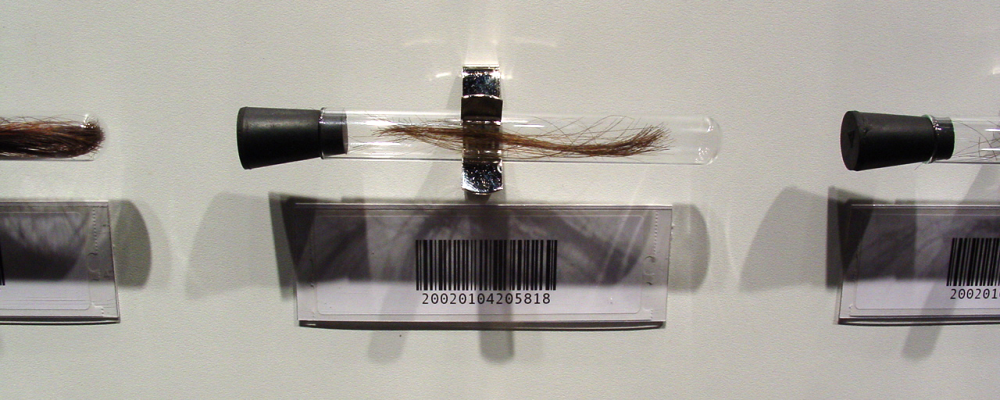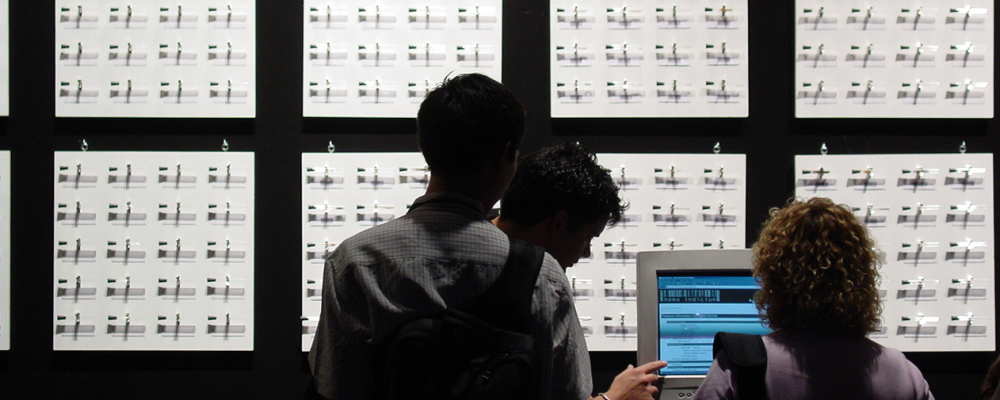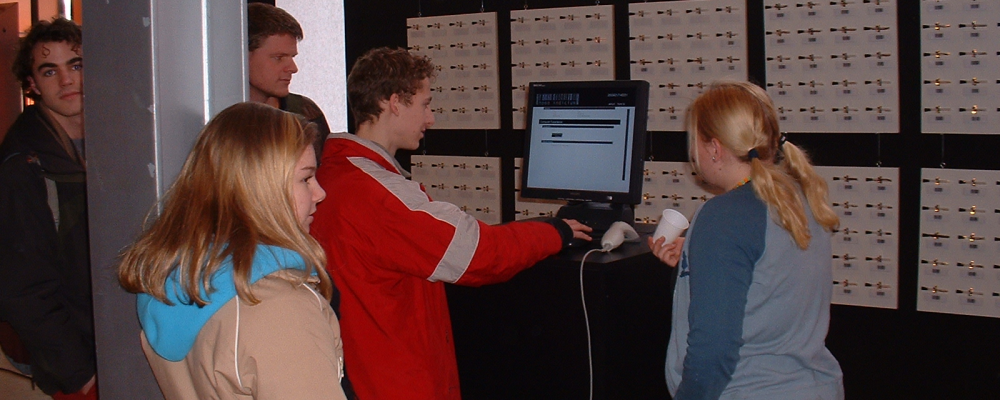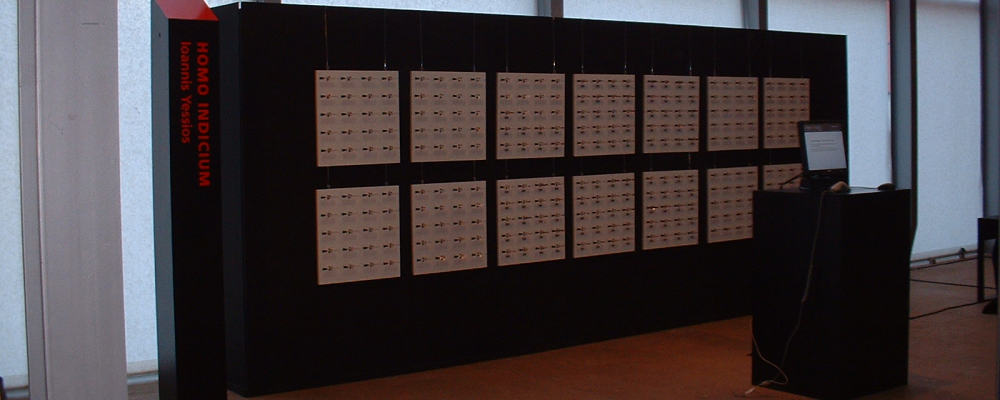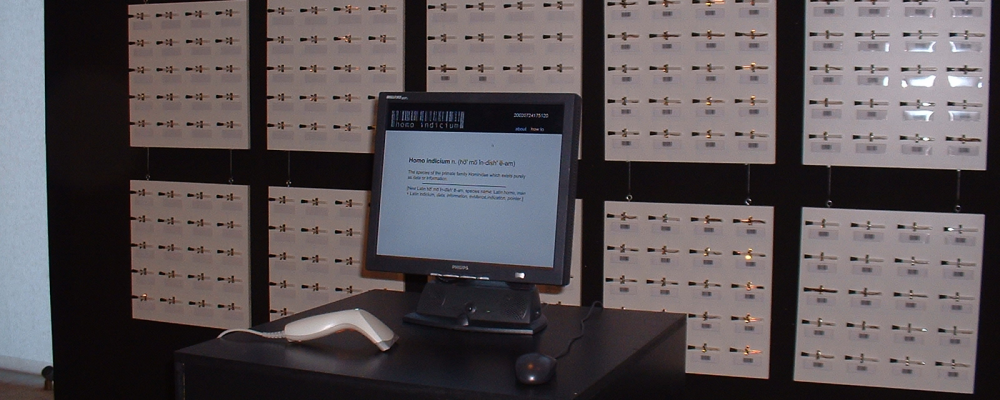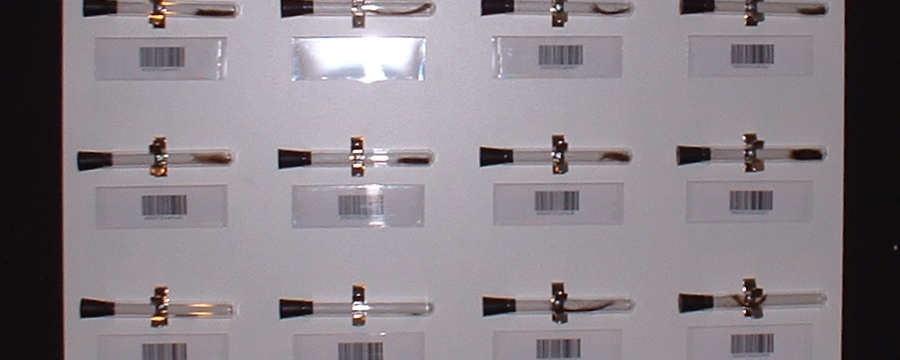Homo Indicium is an installation based on my exploration of data collection and the digital identities that emerge. I began by exploring the nature of data collected about people. In a society where technology assists in every aspect of life, most people have accumulated a digital identity. It is an identity based on bits and pieces of information stored in fragments over a vast network of computers. Buying habits, means of identification, medical histories, personal histories are all stored in some way. This data influence countless decisions made by both humans and machines. Homo Indicium allows its audience to interact with data collection as a way of exploring questions raised by this process.
The name, Homo Indicium, is derived from the Latin words, homo, which means man, and indicium, which means data or information. Together, they form the scientific name of the species of humans which exists purely as information.
At its essence, Homo Indicium is a database. This database contains information about people who have seen the piece and chosen to participate. The physical components to Homo Indicium are a visualization of this database. They serve as the interface for interacting with the database. Thru the interface the audience can access the information contained, or populate the database by volunteering their own information. Due to this volunteered information, Homo Indicium grows with each exhibition.
As you approach Homo Indicium you see a number of test tubes mounted on the wall. Upon closer inspection, you see that many of these test tubes contain hair samples. Each hair sample has a unique barcode directly below it. Tubes are held on 2 ft by 2 ft panels which hang from the wall. Each panel holds 20 tubes. A scanning station in front of the test tubes allows the audience to scan a barcode and view the information associated with that hair sample. Information includes a wide variety of facts, fingerprints, and a voice print. An other computer station in the space allows audience members to add their information to the database. Although the information collected is of a highly personal nature, addresses, names, or government issued identification numbers are not collected.
